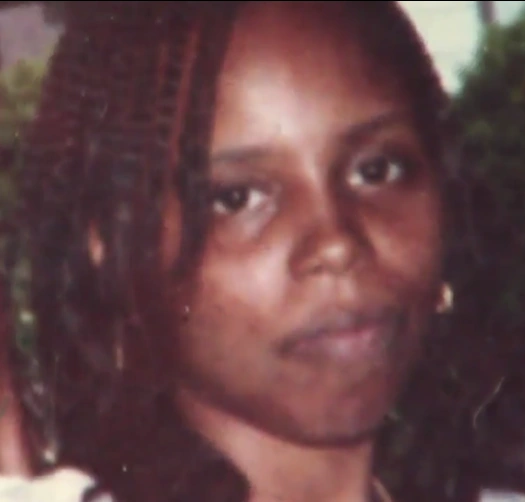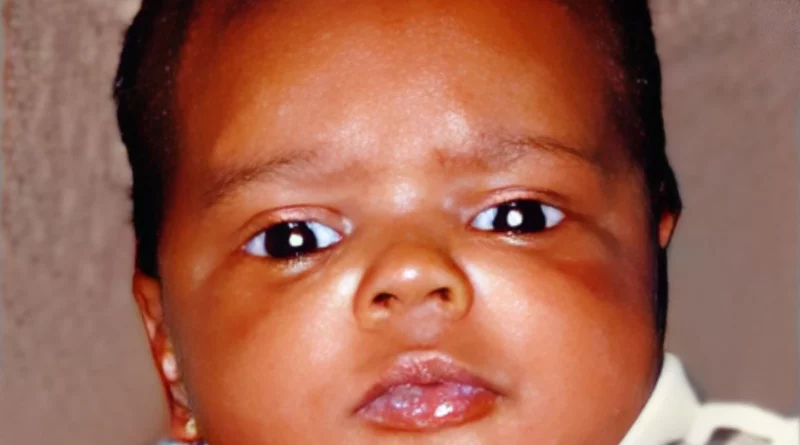Andre Bryant Disappearance in Brooklyn New York
The disappearance of Andre Bryant on March 29, 1989, in Brooklyn, New York, stands as a haunting cold case that has left his family and the community searching for answers for over three decades. Andre, a one-month-old infant, vanished under mysterious and tragic circumstances. His mother, Monique Rivera, was found murdered shortly after his abduction, further deepening the mystery and adding a layer of heartbreak to this unsolved case.
Background on Andre Bryant
Andre Terrence Bryant was born in February 1989 to Monique Rivera and Timothy Bryant, living in Brooklyn, New York. Living in a modest apartment, he was the youngest of his siblings. Described as a beautiful and cheerful infant, Andre had barely begun his life before he was taken. The Bryant family struggled financially, but Timothy did what he could to provide for his family. Monique was known as a devoted mother who vowed to keep her children safe and provide them a better life.
Events Leading to March 29, 1989
On March 28, 1989, Monique encountered two unidentified women who approached her, expressing interest in Andre. They engaged Monique in conversation and offered to help her buy baby supplies and clothes for Andre. These women presented themselves as well-meaning strangers, eager to assist a young mother. It was an offer that likely seemed generous, considering Monique’s financial struggles, making her vulnerable to deception.
March 29, 1989: Day of Disappearance
On March 29, Monique agreed to go shopping again with the women, this time only taking Andre along with her. Monique’s sister watched the other children. Around 2PM her and Andre were seen getting into a red Pontiac Grand Am car with the women, supposedly heading toward a shopping strip to buy baby supplies. This was the last time Monique and Andre were seen together. Later that day, when Monique failed to return home, her family grew alarmed and reported her missing.
The next day, March 30, Monique’s body was discovered in a wooded area of the Bronx. She had been strangled to death, but there was no trace of Andre. Authorities quickly realized that they were dealing with a possible abduction rather than a typical missing person case.
Monique Rivera and the Two Women

Monique Rivera, the young mother of Andre, played a central role in the case until her tragic murder. Described as a kind and loving mother, Monique’s decision to trust the two unknown women was likely influenced by her hope to secure better resources for her children. The two unidentified women remain central figures in the case. Witnesses described them as well-dressed and friendly, but their intentions were clearly sinister.
The women’s motivations and identities have never been confirmed. Investigators suspect they were involved in Monique’s murder and Andre’s abduction. They may have had ties to illegal adoption networks.
Monique Rivera’s Murder and Link to Andre’s Disappearance
Monique Rivera’s murder added a grave layer to Andre’s disappearance. Her body was discovered in the Bronx, which was over 20 miles away from where she was last seen in Brooklyn. The distance between the locations raised concerns that Andre might have been transported out of Brooklyn, complicating search efforts. The murder itself pointed to a violent abduction, suggesting that Monique might have resisted handing over Andre, leading to her tragic death.
Location: Brooklyn and Bronx, New York
Brooklyn, where Andre was last seen, and the Bronx, where Monique’s body was found, are significant locations in this case. Brooklyn in the late 1980s was a diverse yet struggling borough, with areas marked by crime and economic hardship. The Bronx, where Monique’s body was discovered, had similar social dynamics, making both locations potential hubs for illegal activities, including trafficking and illegal adoptions.
Suspicions of Illegal Adoption Networks
Authorities have long speculated that Andre’s disappearance might be connected to illegal adoption networks, a theory supported by similar cases in New York City during that period. In the late 1980s, adoption scams were prevalent, with infants often being abducted and sold to unsuspecting adoptive families. Law enforcement investigated potential links to such networks, but no concrete evidence was found to confirm Andre’s whereabouts.
Police Investigation: Initial Efforts and Challenges
The police investigation faced numerous challenges from the outset. While the murder of Monique Rivera provided evidence of foul play, the lack of witnesses who could provide substantial information about the two women complicated the search for Andre. Investigators canvassed neighborhoods, interviewed potential witnesses, and circulated sketches of the suspects based on descriptions provided by those who had seen them.
Despite these efforts, the investigation soon stalled. The case suffered from a lack of leads, insufficient forensic evidence, and a limited media spotlight.
Role of Media Coverage
Media coverage of Andre’s case was initially robust, focusing on the urgency of finding an abducted infant. However, the coverage quickly diminished, as other news stories emerged, pushing Andre’s case to the margins. The decline in media attention hampered the investigation, as public awareness is often critical in generating new leads.
Community Involvement and Advocacy
Brooklyn residents, community leaders, and activists organized vigils, distributed flyers, and pushed for more media coverage in hopes of finding Andre. Organizations dedicated to finding missing children became involved, advocating for continued investigation and public awareness. The community’s commitment to finding Andre helped keep the case alive, but unfortunately, it did not lead to his recovery.
Andre’s Case as a Cold Case
By the early 1990s, Andre Bryant’s case was officially classified as a cold case. It remains open, with occasional reviews by cold case units seeking to use modern investigative techniques. The lack of resolution continues to be a source of frustration for investigators and heartbreak for Andre’s family, who still hope for answers.
Theories and Speculations
Theories and speculations about the disappearance of Andre Bryant and the murder of Monique Rivera on March 29, 1989, in Brooklyn, New York, have circulated for years. These theories attempt to make sense of the tragic events that unfolded, though none have been confirmed by authorities. Here are some of the main theories and possible explanations for this complex case:
Illegal Adoption Network
One of the most prominent theories is that Andre Bryant was abducted as part of an illegal adoption scheme. This idea is rooted in similar cases that occurred in New York City during the late 1980s, when infants were sometimes taken and sold to adoptive families through illicit means.
- Possible Motives: The two women who lured Monique and Andre into their vehicle may have been part of a larger criminal network specializing in the illegal adoption of infants. This theory suggests that Andre was specifically targeted, possibly due to his age and the vulnerability of Monique as a single mother.
- Monique’s Refusal to Cooperate: It is believed that Monique may have resisted the abductors’ attempts to take Andre, leading to her murder. Her body was found strangled in the Bronx, which aligns with the idea that the perpetrators took drastic measures when she refused to give up her child.
Revenge or Personal Grievance
Another theory considers the possibility that Monique’s murder and Andre’s abduction could have been the result of a personal vendetta.
- Potential Personal Conflicts: While Monique’s family has not indicated any specific personal conflicts, this theory suggests that someone with a grudge against Monique may have orchestrated the abduction. The involvement of two strangers, however, makes this theory less likely unless these women were hired by someone known to Monique.
- Lack of Leads: The lack of witnesses or evidence pointing to a personal dispute weakens this theory, but it remains a consideration due to the targeted nature of the crime.
Trafficking or Exploitation
Given the nature of the abduction, another disturbing possibility is that Andre was taken for human trafficking purposes.
- Sex Trafficking Concerns: While Andre was only a month old at the time, some investigators consider the possibility that the abductors were connected to a trafficking ring. While there’s no evidence to suggest this definitively, the fact that Monique’s murder was so abrupt and violent raises questions about the abductors’ intent.
- No Ransom Demands: Unlike some child kidnappings that involve ransom demands, Andre’s abduction never saw any such requests. This suggests that monetary gain from the family was not a motive, making illegal adoption or trafficking more plausible explanations.
Accidental Death Followed by Cover-up
A less commonly discussed theory is that Andre may have suffered an accidental death after being taken by the women, who then tried to cover up their crime.
- Unintended Consequences: If the abduction was not initially meant to result in Monique’s murder or Andre’s death, but events escalated unexpectedly, the abductors might have attempted to dispose of Andre’s body to avoid discovery. However, this theory has limited support, as there are no indications that the perpetrators tried to explain Monique’s murder or offer a misleading narrative.
Inside Job or Mistaken Identity
Some speculate that Monique and Andre could have been targeted by mistake or as part of a broader scheme involving someone else.
- Mistaken Target: It’s possible that Monique was not the intended target, but the abductors mistook her for someone else, and Andre was taken simply because he was with her at the time.
- Internal Knowledge: Although there is no evidence suggesting that someone from Monique’s personal circle was involved, some believe it’s worth considering whether the abductors had inside knowledge about Monique’s routine, making it easier for them to approach her and Andre.
Speculations About the Two Women
The two unidentified women are central to the theories surrounding Andre’s disappearance. Their appearance, demeanor, and approach to Monique have fueled speculation:
- Well-Organized and Deceptive: The women presented themselves as kind and trustworthy, which is consistent with the tactics of traffickers or those involved in illegal adoption networks who often use deception to gain the trust of potential victims.
- Potential Links to Other Cases: There have been suggestions that these women might be connected to other similar cases in New York City, indicating a broader network of individuals who target vulnerable parents.
Why Has Andre Never Been Found?
The persistent mystery of why Andre has never been found raises even more questions.
- Illegal Adoption Scenario: If Andre was sold into an illegal adoption, he might be living under a different identity, possibly with adoptive parents who are unaware of the circumstances of his abduction.
- Lack of Media Attention and Cold Case Status: The case’s transition to cold case status and diminishing media attention likely hindered the investigation, making it more challenging to generate leads over the years. New information, witnesses, or advancements in forensic technology could be crucial to solving the case.
Potential for New Developments
While the case has remained unsolved for over three decades, there is always a possibility that new leads could emerge. Advances in DNA technology, better cooperation among agencies, and renewed public interest could all contribute to new breakthroughs.
- DNA Advances: Given recent breakthroughs in solving cold cases through genealogical DNA, there is hope that similar methods could be used to identify Andre if he is still alive.
- Witnesses Coming Forward: There’s always a chance that someone with knowledge of the abduction, perhaps a bystander or even someone involved, may eventually come forward to provide crucial information.
The disappearance of Andre Bryant and the murder of Monique Rivera continue to be one of Brooklyn’s most tragic and unsolved mysteries. Without new leads or breakthroughs, the case remains speculative, but the pursuit of answers persists.
Lasting Impact on the Family and Community
The disappearance of Andre Bryant has had a lasting impact on both his family and the Brooklyn community. The Bryant family has lived with uncertainty and grief for decades, holding on to the hope that Andre might still be alive somewhere. The community has used the case as a rallying cry for better support systems for missing children, advocating for reforms in law enforcement and social services.
Conclusion
The disappearance of Andre Bryant on March 29, 1989, remains one of Brooklyn’s most tragic unsolved cases. Despite decades of efforts, the mystery of what happened to Andre and who was behind his abduction persists. As with many cold cases, hope endures that new information or a witness may one day come forward, bringing long-awaited answers and closure to those who have been affected by this heartbreaking case.
Discover more from City Towner
Subscribe to get the latest posts sent to your email.




